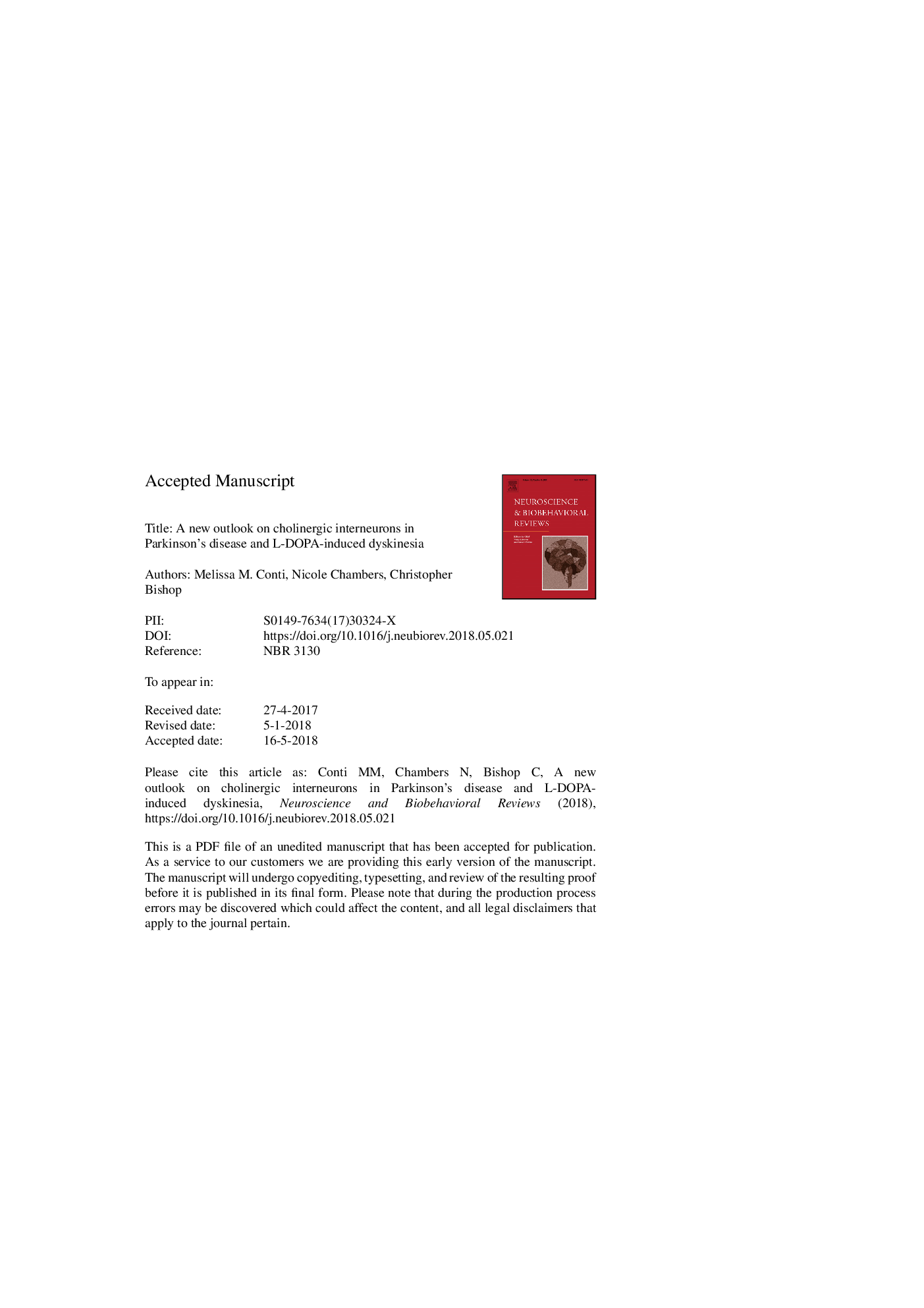| Article ID | Journal | Published Year | Pages | File Type |
|---|---|---|---|---|
| 7301544 | Neuroscience & Biobehavioral Reviews | 2018 | 80 Pages |
Abstract
Traditionally, dopamine (DA) and acetylcholine (ACh) striatal systems were considered antagonistic and imbalances or aberrant signaling between these neurotransmitter systems could be detrimental to basal ganglia activity and pursuant motor function, such as in Parkinson's disease (PD) and L-DOPA-induced dyskinesia (LID). Herein, we discuss the involvement of cholinergic interneurons (ChIs) in striatally-mediated movement in a healthy, parkinsonian, and dyskinetic state. ChIs integrate numerous neurotransmitter signals using intrinsic glutamate, serotonin, and DA receptors and convey the appropriate transmission onto nearby muscarinic and nicotinic ACh receptors to produce movement. In PD, severe DA depletion causes abnormal rises in ChI activity which promote striatal signaling to attenuate normal movement. When treating PD with L-DOPA, hyperkinetic side effects, or LID, develop due to increased striatal DA; however, the role of ChIs and ACh transmission, until recently has been unclear. Fortunately, new technology and pharmacological agents have facilitated understanding of ChI function and ACh signaling in the context of LID, thus offering new opportunities to modify existing and discover future therapeutic strategies in movement disorders.
Related Topics
Life Sciences
Neuroscience
Behavioral Neuroscience
Authors
Melissa M. Conti, Nicole Chambers, Christopher Bishop,
